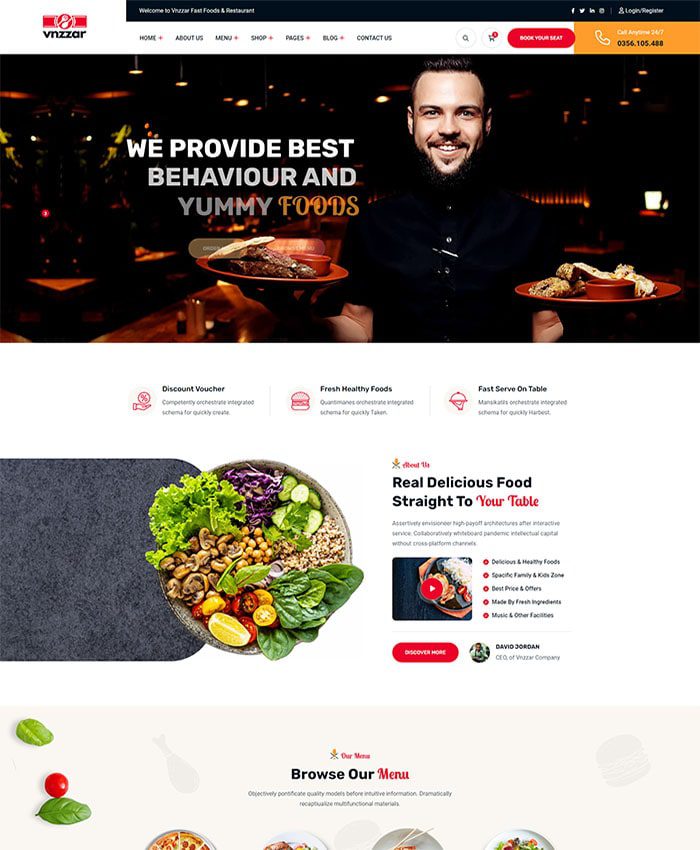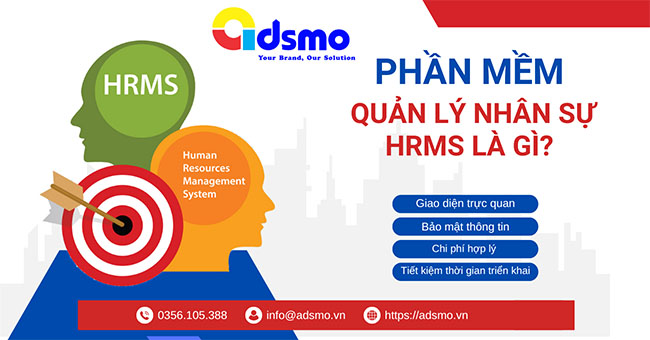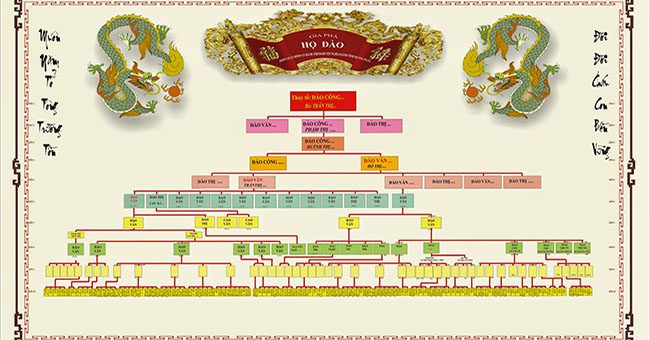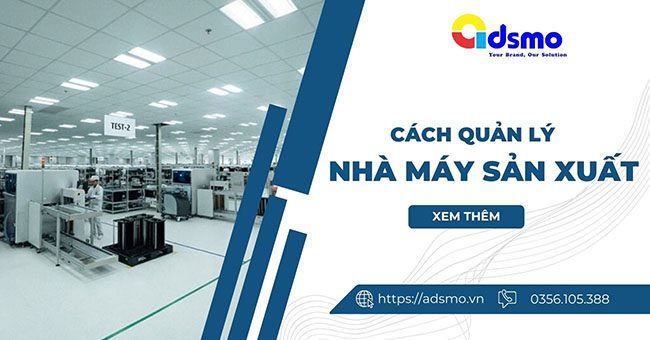For businesses, a human resource organization chart helps businesses have an effective, clear, transparent and flexible organizational structure, facilitating management, operation, assignment and coordination of work. So what is a human resource organization chart? Let’s find out with ADSMO in the content below.
WHAT IS A HUMAN RESOURCE ORGANIZATION CHART?
A human resource organization chart is a diagram that represents the organizational structure of an organization or company. It is often used to illustrate how positions and departments within the organization interact and connect with each other. This diagram often uses box images and connecting lines to display information about the structure and relationships between members in the organization.
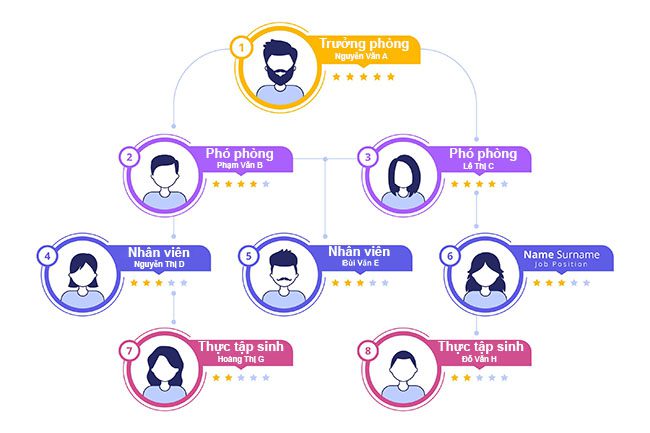
The diagram can help people in the organization understand the structure and working relationships between members, helping to create efficiency in work and organizational management. It can also be used in the recruitment, training and human resource management process to create unity in the organization.
THE ROLE OF HUMAN RESOURCE ORGANIZATION CHART IN ENTERPRISE HUMAN RESOURCE MANAGEMENT
Human resource organization chart in a business plays an important role in managing and organizing human resources to ensure that the business’s operations take place in an efficient and organized manner. Below are some important roles of human resource organization chart:
- Dividing responsibilities and authorities: An organizational chart clearly defines the roles and responsibilities of each position within the business. This helps ensure that each person in the organization knows what they need to do and what authority they have.
- Creating an organizational structure: It helps define how departments or teams work together and interact with each other. This is important to ensure that information and resources are communicated and shared effectively.
- Performance Management: An organizational chart allows managers to evaluate the performance of each member of the organization. It helps measure performance, identify individual strengths and weaknesses, and make decisions about improving performance.
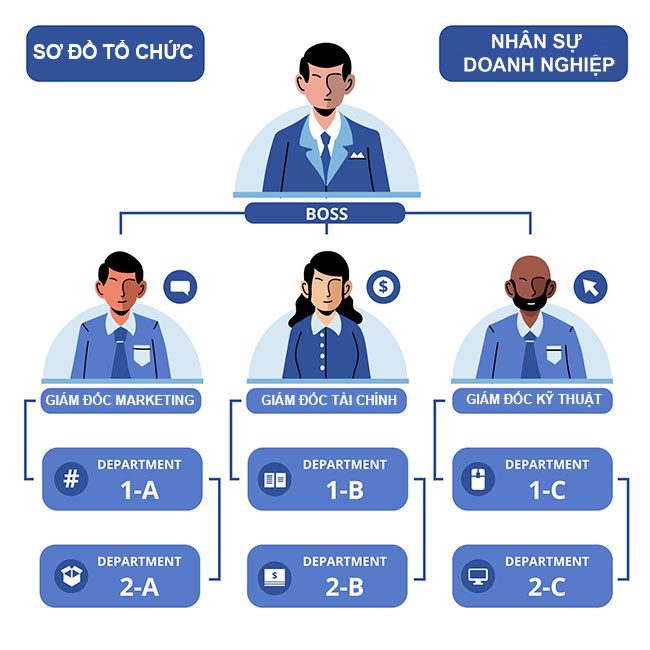
- Human resource planning and development: The human resource organization chart can be used to determine future human resource needs and plan training and development to meet those needs.
- Creates clarity and transparency: An organizational chart helps create clarity and transparency in an organization. Everyone knows who is who and who is responsible for what decisions. This helps avoid conflicts and makes it clear how the organization works.
- Supports human resource management: An organizational chart is a useful tool for human resource management to manage the workforce, conduct recruitment processes, handle employee issues, and implement other human resource strategies.
- Promoting social interaction and organizational culture: It helps promote relationships and social interactions within the organization. In particular, the organizational chart can show how people in the organization connect with each other and create a common working culture.
Thus, the human resource organization chart plays an important role in managing and developing a business’s human resources, helping to improve the performance and efficiency of the organization’s operations.
HOW TO BUILD A COMPANY’S PERSONNEL ORGANIZATION CHART
Building a human resource organization chart in a business is an important process to ensure that the organization operates effectively and in an organized manner. Below are the basic steps to build a human resource organization chart:
- Determine the organizational structure: Collect information, determine the organizational structure of the business. This includes deciding which departments, faces or teams are needed to carry out the organization’s goals and tasks. You can use organizational models such as functional structure, project structure, or matrix structure, depending on the type of business you have.
- Create an organizational chart: Use tools such as diagramming software (e.g., Microsoft Visio, Lucidchart) or paper and pen to draw an organizational chart. Create a chart with boxes representing each position and connect them with lines to show the relationships and organizational structure.
- Test and Adjust: After you have created your initial organizational chart, review it to ensure it is accurate and effective. If necessary, revise the chart to reflect changes in the organization or business goals.
- Update periodically: A business’s organization and structure may change over time. Therefore, the organizational chart needs to be updated periodically to reflect these changes and ensure the effectiveness of the organization.
ENTERPRISE HUMAN RESOURCE ORGANIZATION MODELS
There are many different human resource organization models that businesses can apply depending on their size, industry, goals, and organizational structure. Below are some popular human resource organization models:
- Functional Organization: This is a common model in which departments are organized based on functions or divisions, such as marketing, manufacturing, finance, and human resources. This model helps to focus knowledge and skills in specific areas.
- Product or Project-Based Organization: The company organizes work groups based on specific products or projects, regardless of function. This model is flexible and suitable for complex projects.
- Geographic Organization: In this model, a company organizes its employees based on geographic location, usually when they operate in different regions or countries.
- Market or Customer-Based Organization: A business organizes itself around a specific market or customer group. This model helps focus on the needs of each individual market or customer.
- Matrix Organization: In this model, an employee can belong to multiple work groups at the same time. This can create flexibility in project management and focus on specific goals.
- Hierarchical Organization: This model is often applied in large enterprises, with clear management levels from the highest level to the lower levels. Power and decisions often move from the top down.
- Network Organization: This model focuses on cooperative relationships with external partners and often does not have a traditional organizational structure. Members of this organization are often partners or freelance individuals.
- Nonprofit Organization: This is a model for organizations that operate with social or charitable goals. Employees usually do not receive personal profits and the work is often focused on social goals.
In addition, there are a number of other human resource organization models, such as horizontal or flat organization models, circular organization models, network organization models, etc.
The human resource organization chart plays an important role in the operation and management of human resources in a business. The diagram is the basic foundation for businesses to build an effective working environment and develop long-term.
>>>Don’t miss:
What is a human resource plan? Steps to build a human resource plan
KPI – An effective human resource management tool for businesses
Contact ADSMO now – Specializing in providing customized business software solutions, consulting on building digital platforms with the mission.
TOTAL solution, BREAKTHROUGH development – Optimize COST – Increase PROFIT. We are committed to providing you with:
- Management solutions tailored to your business needs.
- Easy-to-use and efficient systems.
- Professional customer support services.
Contact ADSMO now for a free consultation:
- Address: 8th Floor, HD Tower Building – 22 Pho Moi – Thuy Nguyen Ward – City. Hai Phong
- Website: https://adsmo.vn
- Email: info@adsmo.vn
- Hotline: 0356 105 388




